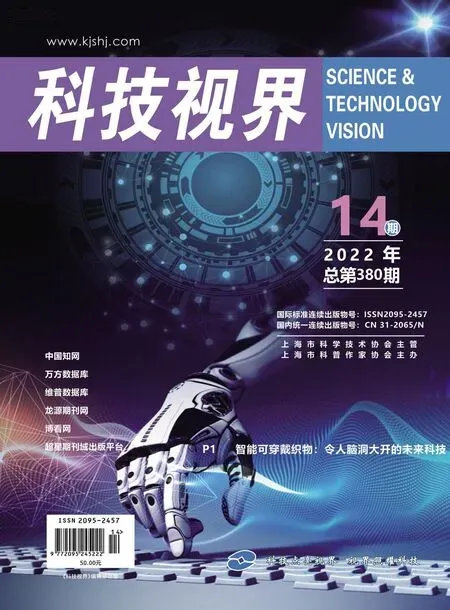等效原理与商标词的翻译
2013-08-15李丹
李 丹
(龙岩技师学院,福建 龙岩 364000)
0 Introduction
Generally speaking,a trade mark word represents the image and reputation ofitsproduct.Consumerscan distinguish thequality,specification and characteristic of a certain kind of commodity by using a trade mark word.According to the point of views of equivalence principle,the versions should achieve a perfect combination of sound,form and meaning.Meanwhile,cultural obstacles in the receptorlanguage should be surmounted.
1 Definition and Function of Trade Mark Words
A trade mark word is an important part of a trade mark that can be vocalized,including letters,words.Take “BMW”, “Haier” as examples,both of them are so called trade mark words because they can be read out.
The functionsoftrade mark wordsare identifying products,promoting consumption and acquiring law protection.In addition,there are two other functions:providing information of products and circulating among consumers.
2 A Study of Equivalence Principle
2.1 Definition of Equivalence Principle
“Equivalence” in translation is often defined asto use the equivalent text of the target language and replace the original text of the source language.Nida,an American translator,classified “equivalence”into “formal correspondence and dynamic equivalence”.
In his work Theory and Practice of Translation,Nida made a more detailed explanation about “dynamic equivalence”,which is also regarded as the definition of “equivalence principle”.Dynamic equivalence (equivalence principle)is therefore to be defined as“the degree to which the receptors of the message in the receptor language respond to it in substantially the same manner as the receptors in the source language”.
Equivalence principle focuses on the feeling of both the reader of translated text and the original readers toward the same text.However,those feelings should be generally but not absolutely the same.In a word,equivalence principle requests translators to consider the feeling of the reader of the translated text when translating trade mark words.
2.2 Application of Equivalence Principle in Translating Trade Mark Words
The application of equivalence principle in translating trade mark words includes commercial effect and texts’style.Generally speaking,the commercial effect is to promote the sales,and the effect on texts’style is to meet the linguistic custom and aesthetic appreciation of the target customers.And a good translation of trade mark word should be a perfect combination of sound,form and meaning.
When “Clean&Clear” enters into Chinese market,it is translated as“可伶可俐”.It is a brand of daily-use cosmetics to nourish skin.Since most of the target consumers are female youth,the translation picks up Chinese word “伶俐”which is used to describe a pretty and beautiful girl.Furthermore,this translation holds the original name,sound and a balance form.
Other successful English-Chinese translations are:“Jonson&Jonson”-“强生”; “Coca-Cola” -“可口可乐”.The Chinese-English translations are “星火英语”-“Spark English”; “号码百事通”-“Best Tone” and so on.All these trade mark words are translated by well applying the equivalence principle.
3 Methods of Translating Trade Mark Words
3.1 Literal Translation
The method of literal translation means translating a certain trade mark word according to its literal meaning.It demands translators to find a proper and natural equivalent word in the target language to convey accurately the information of the original trade mark word.For example:Forget-me-not-勿忘我 (perfume);Evening-in-Paris-夜巴黎(perfume);Pioneer-先锋 (appliance).The Chinese trade mark words are:唐朝-Dynasty(wine);蜂花-Bee&flower(shampoo);钻石-Diamond(watch).This method of literal translation keeps the equivalent sense of the trade mark words’indication,association,social culture and aesthetic appreciation and provides the products’information.
3.2 Transliteration with Meaning Implication
The method of transliteration with meaning implication means translating a certain trade mark word partially according to its pronunciation and partially according to a certain meaning in the target language.For example:Benz-奔驰(car);Canon-佳能 (camera);afeguard-舒肤佳 (soap);Pampers-帮宝适 (diaper).The Chinese trade mark words are四通-Stone(computer);格力-Gree(air-conditioner);快克-Quiker(medicine).The method of transliteration with implication not only remains the original beauty of the phonology,but also indicates the function and characteristics of the products.
3.3 Creative Translation
The method of creative translation means translating the trade mark words by making some adjustments on the basis of the original one to meet the needs of new customers.For example:Head&Shoulders-海飞丝(shampoo);7-UP-七喜(soft drink);Poison-百爱神(perfume).The Chinese trade mark words are:新飞-FRESTECH(refrigerator);宝龙-Powerlong;苏泊尔-Supor(pressure cooker).After creative translating these trade mark words,the translated ones remain the characteristic of the products and become more attractive and adaptable in the target language.
3.4 A Comment on Some Versions
According to the analysis of the trade mark words translation,we realize the importance to translate a trade mark word well.And here,this paper elaborates some personal ideas about the re-translations of some trade mark words.
“金龙”is a famous trade mark word of vehicles in China.Obviously,the literal translation “Golden Dragon” will not be popular among the English-speaking customers because the cultural differences about“dragon”.It is better to be translated as “Kinglong” which avoids the literal translation of“龙”and contains the connotation of kingship in the field of vehicles.
“红 豆”is a famous trade mark word in China.Usually,it is translated into “Hongdou” by Pinyin translation.However,this translation can not well convey the real connotation of “红豆”which is regarded as love beans in Chinese.It is better to stick to the Chinese tradition and literally translate it as “Love Beans” or “Red Beans”.Both“Love Beans” and “Red Beans” will attract those foreigners who are interested in Chinese traditional cultures.
4 Conclusion
Translation of trade mark words is an activity which conveys commercial information.So,equivalence principle should be a main principle of translation of trade mark words.No matter what methods are chose,the translator should pay attention to the equivalence principle and ensure that the translation is accepted by both foreign and original consumers.
[1]Towards a Science of Translation:Nida,E.A.[M].Leiden:E.J.Brill,1964:67,159.
[2]Theory and Practice of Translation:Nida,E.A.&Taber,C.R.[M].Leiden:E.J.Brill,1969:25.
[3]肖辉,陶玉康.等效原则视角下的商标翻译与文化联想[J].外语与外语教学.2000(3).
